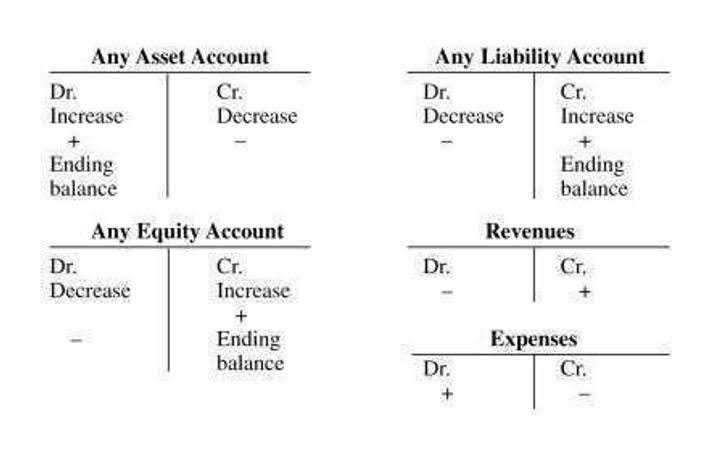How to Do a Cost Benefit Analysis and Why its Important?
Secondly, there is a need to better understand and address the distributional effects of projects and decisions. It’s essential to evaluate and address how these can affect equity and social welfare. Another challenge of CBA is that it relies on assumptions about the future, which can be uncertain.
What Are the Costs and Benefits of Doing a Cost-Benefit Analysis?
Through this process, an analyst can better understand the proposed action strategically versus the relatively mechanical discounted cash flow analysis. Firstly, there is a growing recognition of the need to incorporate non-monetary measures, such as social and environmental impacts, into CBA. The traditional focus on monetary costs and benefits may not always reflect the full impact of a project or decision. The main goal of cost-benefit analysis is to determine whether it is worth undertaking a project or task. This decision is made by gathering information on the costs and benefits of that project.
Analysis Question
- Inflation may increase the cost of the proposed project and change the monetary value of the project from a net benefit to a net cost.
- In business, CBA evaluation may be used to assess the economic feasibility of a new product or service or to compare the costs and benefits of different investment opportunities.
- Learn about the benefits and best practices of CBA, and understand how it can help decision-makers compare costs and benefits and allocate resources efficiently.
- Ask yourself what resources you need (like materials or labor), and what the results of your decision will be (like additional revenue).
- By identifying the costs and benefits of a project or decision, CBA helps decision-makers allocate resources efficiently and prioritize projects based on their expected benefits.
You can track information about your assets, liabilities, and net worth on a balance sheet or part of a personal financial statement. This information will be required to get a home loan or other types of loans. For your net worth to grow in a positive direction, you must increase your assets and decrease your liabilities over a comparison of the benefits of an action to its expected costs is called time. Some individuals receive disability income, social security income, investment income, alimony, child support, and other forms of payment on a regular basis. During school, you may receive support from family that could be considered income. In practice, the relevant horizon is obviously affected by the discount rate used.

Transportation investment

Think of your decision like a project you’ll complete to achieve your proposed course of action. Ask yourself what resources you need (like materials or labor), and what the results of your decision will be (like additional revenue). Cost Benefit Analysis (CBA) is commonly used across a variety of generic business situations. For instance, a business might use CBA to determine if the benefits of expanding to a new location outweigh the costs. It can also be used to decide whether to invest in new technology or stick with the existing one. Businesses often employ CBA to assess the feasibility of launching a new product or service.

Some payments that appear in the financial cost (benefit) streams do not represent direct claims on the country’s resources, but only reflect a resource control transfer from one sector of the society to another. Loan and interest payments, taxes, subsidies, and depreciation allowances all fall into this category. In general, any cost or benefit flow that does not reflect a real resource use should be considered a transfer and netted out when benefits and costs are presented from a societal perspective.
In the double-entry bookkeeping system, expenses are one of the five main groups where financial transactions are categorized. Other categories include the owner’s equity, assets, liabilities, and revenue. Expenses in double-entry bookkeeping are recorded as a debit to a specific expense account. A corresponding credit entry is made that will reduce an asset or increase a liability.
- A positive NPV indicates that the projected earnings exceed the anticipated costs, making the project a worthwhile investment, while a negative NPV suggests the opposite.
- However, for large projects with a long-term time horizon, a cost-benefit analysis might overlook critical factors, such as inflation, interest rates, varying cash flows, and the present value of money.
- Cost-benefit analysis allows an individual or organization to evaluate a decision or potential project free of biases.
- Cost-benefit analysis (CBA) involves the practical application of modern welfare economics to public policy.
- For one, it’s typically more difficult to make accurate predictions the further into the future you go.
If your employer has contracted with HBS Online for participation in a program, or if you elect to enroll in the undergraduate credit option of the Credential of Readiness (CORe) program, note that policies for these options may differ. Updates to your application and enrollment status will be shown on your account page. We confirm enrollment eligibility within one week of your application for CORe and three weeks for CLIMB. HBS Online does not use race, gender, ethnicity, or any protected class as criteria for admissions for any HBS Online program. HBS Online does not use race, gender, ethnicity, or any protected class as criteria for enrollment for any HBS Online program. No, all of our programs are 100 percent online, and available to participants regardless of their location.
Cost Benefit Analysis in the Real World
An indirect benefit could be an increase in customer satisfaction if the product was previously hard to obtain. An intangible benefit might be an improved production process once the factory is up and running. Another intangible benefit might be taking market share aware from a competitor. Overall, the choice of CBA type depends on the specific context and objectives of the analysis. By selecting the appropriate type of CBA, decision-makers can ensure that the analysis provides relevant and accurate information to inform decision-making.
How to Establish a Framework

Cost-benefit analysis (CBA) is a process performed by individuals, governments and businesses when considering a course of action or proposed project. It serves as a framework for evaluating the desirability of an action by comparing total benefits against total costs. If the expected net benefits outweigh the expected costs, then it makes sense to undertake the action. If the opposite is true (costs outweigh the benefits), then the action would not be undertaken. The discount rate used in CBA can have a significant impact on the results of the analysis, and different discount rates may be appropriate for different contexts. This can make it hard to compare the results of different CBAs, and can make it hard to accurately evaluate the true costs and benefits of a project or decision.